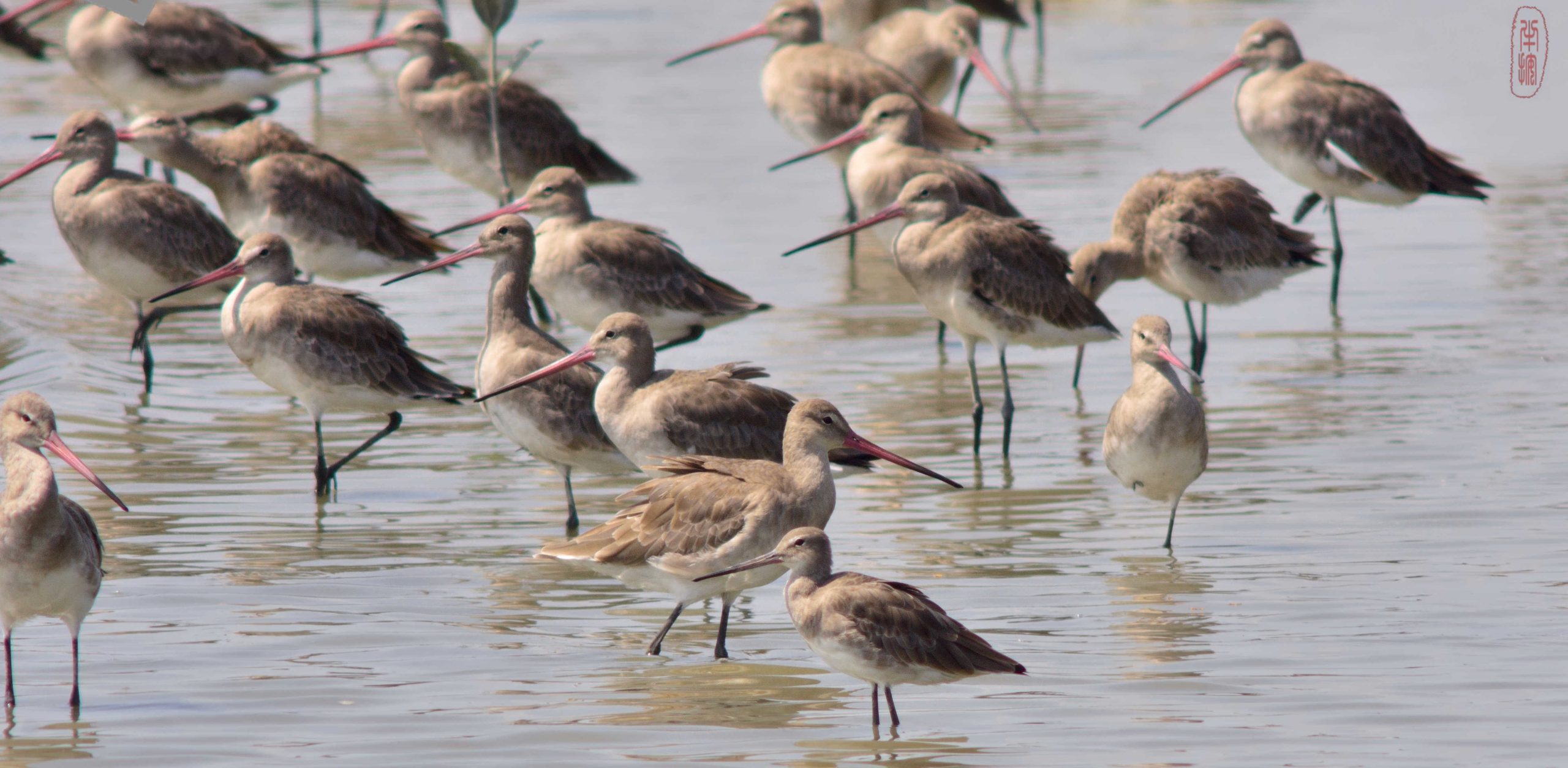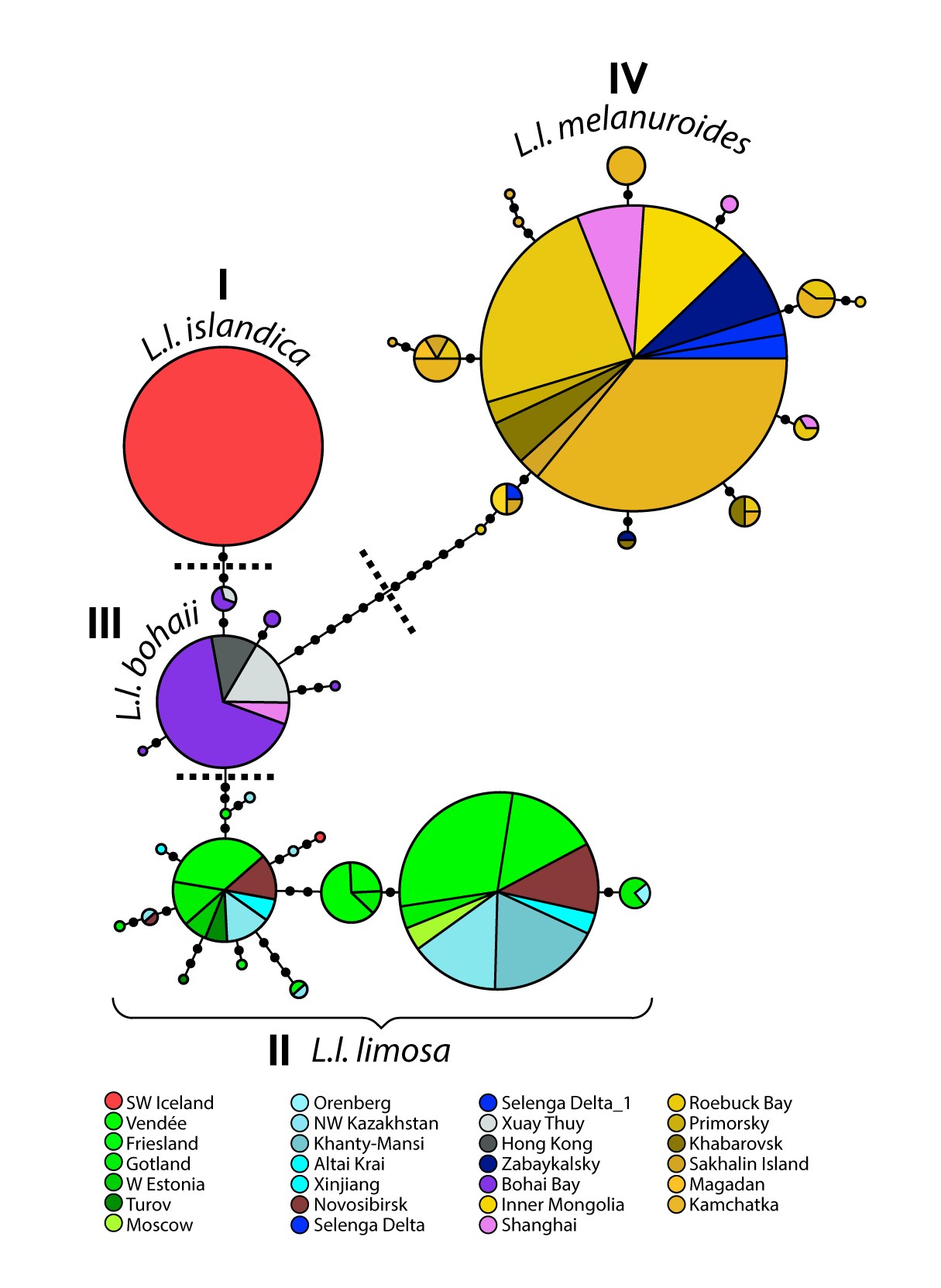Occurring across Eurasia, the black-tailed godwit has three recognized subspecies, from east to west melanuroides, limosa, and islandica, respectively. With the smallest body size, melanuroides has been considered the only subspecies in the East Asian-Australasian Flyway. Yet, observations along the Chinese coast indicated the presence of distinctively large individuals.

Black-tailed Godwit © Bingrun Zhu
The latest research on a population of black-tailed godwit in Bohai Bay, China has revealed it’s sub-specific status.
The main conclusions include:
- Black-tailed godwits in Bohai Bay were indeed significantly larger than melanuroides, resembling limosa more than islandica, but with relatively longer bills than islandica.

© Qiuhe Chen
- The level of genetic differentiation between Bohai godwits and the three recognized subspecies was of similar magnitude as the differentiation among previously recognized subspecies.

© Bingrun Zhu
Based on these segregating morphological and genetic characteristics, the authors proposed that these birds belong to a distinct population, which may be treated and describe as a new subspecies.
This research was funded by the Natural Science Foundation of China, the National Geographic ‘Air and Water Conservation’ Fund, SEE Foundation, the Netherlands Organization for Scientific Research (NWO).
This paper is open access and available to anyone without charge at: https://doi.org/10.1111/ibi.12890
Full citation:
Discovery of a morphologically and genetically distinct population of Black‐tailed Godwits in the East Asian‐Australasian Flyway. Zhu, B.R., Verkuil, Y.I., Conklin, J.R., Yang, A., Lei, W., Alves, J.A., Hassell, C.J., Dorofeev, D., Zhang, Z. & Piersma, T. 2020. IBIS. DOI: 10.1111/ibi.12890.
Article prepared by Bingrun Zhu (Drew) from Beijing Normal University & The University of Groningen.




